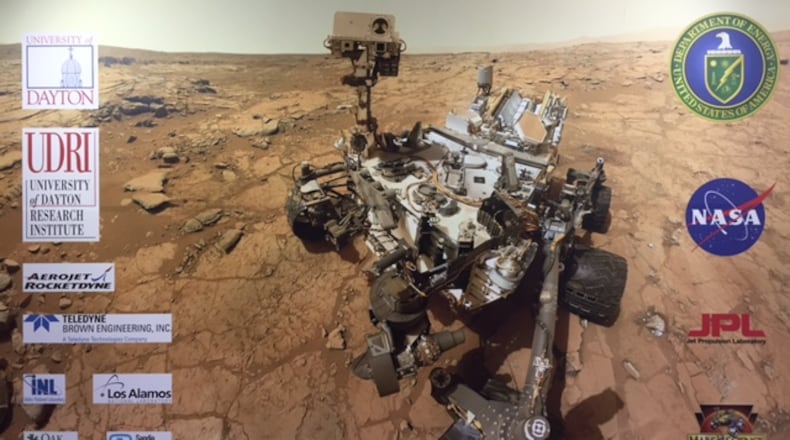RELATED: Dayton technology flies New Horizons probe to Pluto
With cots and sleeping bags, UDRI scientist Chad Barklay and UES engineer Allen Tolston, who works in Beavercreek, spent 36 hours camped next to the one of the generators while they heated the unit to a temperature that’s about 100 degrees hotter than the maximum temperature experienced by a current rover Curiosity, according to UDRI.
The prototype was wrapped in an insulating material that helped raise the temperature to 428 F in an effort to see how the system held up.
In early February, NASA scientists narrowed down potential landing sites for a trip to Mars in 2020 to three choices, at least one of which is likely to be warmer than sites where previous rovers have landed, UDRI said.
That’s why UD researchers performed the high-temperature test on the generator prototype — to see if it would successfully operate at higher temperatures.
“The Mars 2020 rover will be powered by a Multi-Mission Radioisotope Thermoelectric Generator (MMRTG)—similar to the unit currently providing power to Curiosity in Gale Crater—which converts heat created by naturally decaying plutonium radioisotopes into electricity to power the rover,” UDRI said in a release Wednesday.
UDRI houses two generator qualification units that are identical to Curiosity’s generator, except they are powered and heated with electricity rather than plutonium.
For the last three years, researchers have been designing and running experiments to provide NASA with critical information related to Curiosity’s continued exploration, as well as in support of Mars 2020 and other future missions.
“The maximum temperature at Gale Crater is about 32 F during the day, but it could be up to 35 degrees warmer at Columbia Hills,” Barkley said in UDRI’s release. “Although that doesn’t sound like much, an increased Martian surface temperature means the surface of the (the generator) could potentially get much hotter.”
He added: “It went better than anybody could have hoped. Everyone was very impressed with our ability to design and develop a test setup and protocols that were unlike anything ever done before. We were very pleased.”
NASA is expected to choose a final landing site in the next two years, UDRI said. Mars 2020 is targeted for launch in July 2020.
FIVE NEW BUSINESS READS
About the Author
